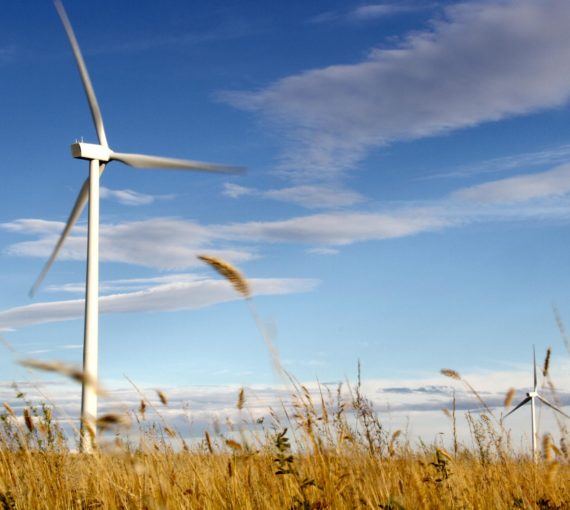Sometimes policies with the least interesting names that no one ever talks about turn out to be the biggest climate winners. A low-carbon fuel standard is just such a policy. But without action soon by government in B.C. to update the standard, this key tool could fail to deliver emissions reductions and economic opportunities from clean fuel production.
What is it?
We need to move transportation toward zero carbon emissions, whether fully electric or hydrogen powered. But that won’t happen right away despite laws, incentives and zero emission vehicle mandates. So, what to do as we transition from mostly internal combustion engine to fully electric? Clean fuel standards are a way to make fuels less polluting and reduce carbon emissions. They’re a bridge to where we need to be.
Clean fuel standards are a way to make fuels less polluting and reduce carbon emissions. They’re a bridge to where we need to be.
A standard requires that the amount of carbon over a fuel’s lifecycle must be reduced during production, transportation or combustion stages. That makes it less polluting compared to most fossil fuels supplied by refiners. Fuel suppliers get credits for fuels with a lower carbon intensity than the current limit. These credits can be traded among fuel suppliers, creating the incentive to produce fuels with lower levels of carbon.
A wide range of clean fuels (advanced biofuels, biogas, hydrogen, electricity), zero emission vehicles (electric and hydrogen fuel cell vehicles), cleantech innovations and infrastructure are needed for low carbon transportation.
B.C.’s low carbon fuel standard allows credits to be earned when electricity is used to power vehicles. This has the positive effect of making fossil fuel suppliers contribute towards electrification.
Why does it matter?
Clean fuel standards promote:
- Innovation and growth in renewables and clean energy
- Transition to renewable fuels in transportation, industry and buildings
- New market options and economic opportunities
- Cost-effective way to meet the requirement
- Reduced carbon pollution from fossil fuel powered vehicles until they can be retired.
It’s particularly important for sectors like long-haul trucking, aviation and shipping (which are not yet included in the regulation):
“Shipping and aviation are more challenging to decarbonize, while their demand growth is projected to be higher than other transport modes. Both modes would need to pursue highly ambitious efficiency improvements and use of low-carbon fuels.” – IPCC 1.5, 2018
Are there any problems with clean fuels?
The production of many clean fuels requires land. There is danger that land will suffer environmental damage without protection. A clean fuel standard must include:
- Sustainability criteria to limit deforestation and habitat damage (e.g., don’t allow forests to be cleared to grow crops for biofuel use)
- Assurances that lands supplying biofuels are managed sustainably
Where is Canada headed?
Modelling suggests the most significant change to reduce carbon emissions in Canada by 80 per cent by 2050 is to progressively reduce reliance on fossil fuels.
What’s happening in B.C.?
British Columbia has a standard under which clean fuels and zero emission vehicles grew from 2010 to 2020. It’s led to more market competition and a less expensive way to reduce transportation emissions.
The low carbon fuel standard is the single greatest measure to reduce carbon emissions in B.C’s CleanBC climate plan.
The low carbon fuel standard is the single greatest measure to reduce carbon emissions in B.C’s CleanBC climate plan. A tightened standard will lead to more B.C-based production and create more jobs.
But as of 2014, transportation fuels continue to make up a large proportion of B.C.’s growing carbon emissions. Ninety-six per cent of the energy for transportation fuels comes from fossil fuels. To reach net zero emissions by 2050, B.C. will need to dramatically bring down dependence on fossil fuels every year.
What does B.C. need to do?
Research shows the low carbon fuel standard can play a major role in meeting B.C.’s 2030 and 2050 greenhouse gas targets, especially for freight.
Since it’s working so well, we’re calling on the B.C. government to put the standard in place for a longer period of time and strengthen it further. How? We’re asking for legislative and regulatory amendments to set annual requirements to meet the 2030 target of 20 per cent below 2010 emissions.
The B.C. government has dragged its feet on ramping up the target and may miss the carbon emission reductions projected in its climate plan. By committing to an ambitious target, B.C. can create a stable ‘market signal’ that will attract capital-intensive investments in new production capacity. B.C. can’t afford to miss out on one of the big—and most effective—tools to clean up its act.
Our Work
Always grounded in sound evidence, the David Suzuki Foundation empowers people to take action in their communities on the environmental challenges we collectively face.




